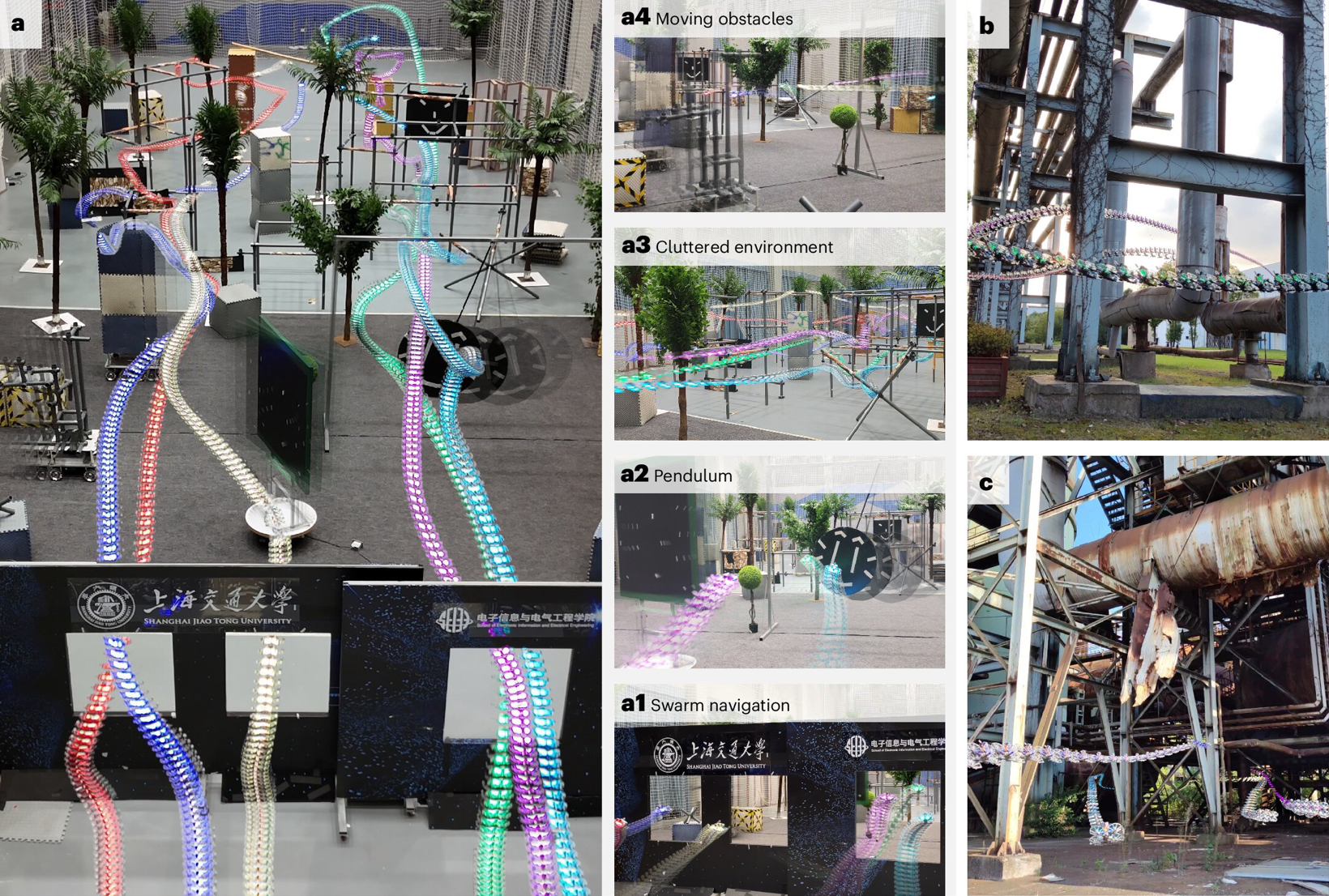According to reports, researchers from Shanghai Jiao Tong University have recently proposed an innovative insect-inspired approach that allows teams of drones to autonomously navigate complex environments at high speeds. This research has been published in the journal Nature Machine Intelligence. The method relies on deep learning algorithms and core physical principles. Professors Zou Danping and Lin Weixiao, co-senior authors of the paper, stated, "Our research inspiration comes from the amazing flying abilities of tiny insects like flies. Such small creatures, with tiny brains and limited perception capabilities, can perform agile and intelligent actions—avoiding obstacles, hovering mid-air, or chasing prey—this has always amazed us. Replicating this level of flight control has been a dream and a major challenge in robotics. It requires closely integrated perception, planning, and control—all relying on very limited onboard computational capacity, similar to the brains of insects." The most common computational methods used for controlling multiple drones break down the autonomous navigation task into several independent modules, such as state estimation, mapping, path planning, trajectory generation, and control modules. While handling these sub-tasks separately may be effective, it can sometimes lead to cumulative errors between different modules, resulting in delayed responses from the drones. In other words, this can cause the drones to react more slowly as they approach obstacles, increasing the risk of collisions in dynamic and chaotic environments. "The main goal of our research is to explore whether lightweight artificial neural networks (ANN) can replace this classical process with a compact end-to-end strategy," said Professors Zou and Lin. "The network takes sensor data as input and directly outputs control actions—this pattern is similar to how flies use a small number of neurons to generate complex, intelligent behaviors. We aim not only for the elegance of biology but also to prove that minimalism in perception and computation can lead to high-performance autonomous flight." The new system developed by the researchers primarily relies on a newly developed lightweight artificial neural network capable of generating control commands for quadcopters based on a 12x16 ultra-low resolution depth map. Although the input algorithm's depth map resolution is low, it has been verified to be sufficient for the neural network to understand the surrounding environment and effectively plan the actions of the flying vehicle.
New Insect-Inspired Method Enables Autonomous Navigation for Drones in Complex Environments

Share this post on: